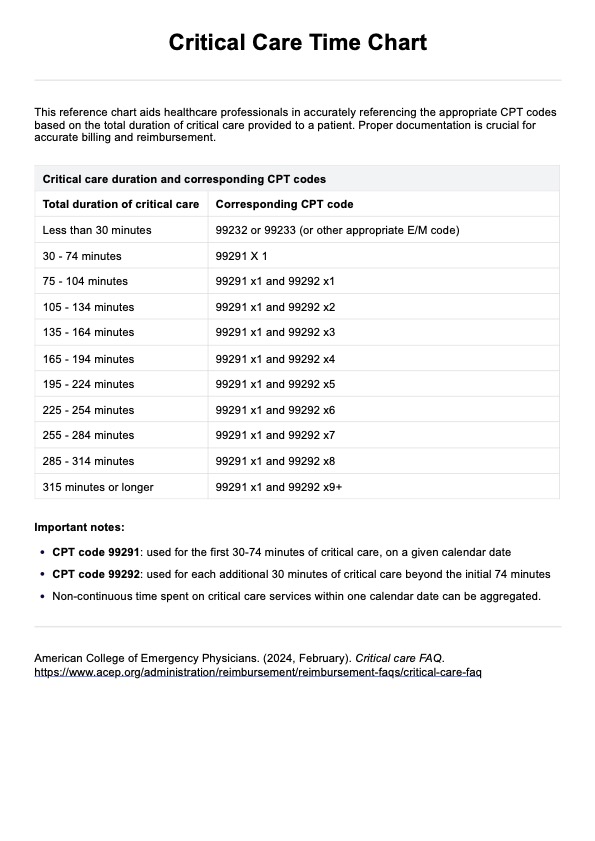Critical care time documentation is crucial for the reimbursement of critical care service providers. Using a reference chart to find the appropriate critical care code ensures the time spent providing intensive care to critically ill or injured patients is accurately billed.

Critical Care Time Chart
Access a helpful Critical Care Time Chart for accurately recording and billing critical care services.
Critical Care Time Chart Template
Commonly asked questions
CPT codes report the total duration of direct critical care services provided to the same patient on the same date. Specific codes correspond to specific intervals of a given number of minutes of critical care.
Using a Critical Care Time Chart streamlines the documentation process by helping you quickly find the correct critical care code. Meticulously recording the time spent on critical care activities is vital for accurate critical care billing. A Critical Care Time Chart also serves as a transparent communication tool with family members, offering them an understanding of the intensive efforts being made to care for their loved one.
EHR and practice management software
Get started for free
*No credit card required
Free
$0/usd
Unlimited clients
Telehealth
1GB of storage
Client portal text
Automated billing and online payments










